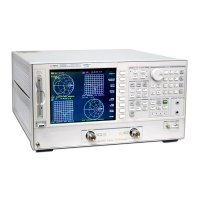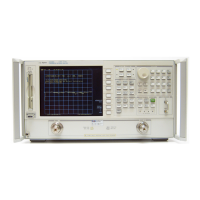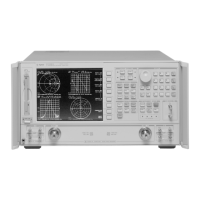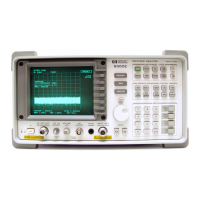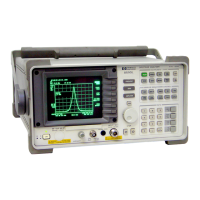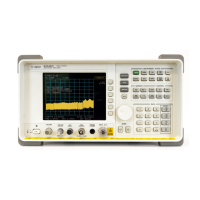Index
Index-5
viewing a single measurement
channel, 5-12
widening the system bandwidth, 5-11
increasing test port input power, 5-14
incrementing the source frequencies,
2-31
in-depth sequencing information, 1-108
autostarting sequences, 1-109
commands completed before next
sequence begins
, 1-108
commands that require a clean sweep,
1-108
decision making functions, 1-114
embedding loop counter value in title,
1-109
features that operate differently in a
sequence
, 1-108
forward stepping in edit mode, 1-108
gosub sequence command, 1-109
GPIO mode, 1-110
limit test decision making, 1-114
loop counter decision making, 1-115
sequence decision making menu,
1-114
sequence size, 1-109
sequence that jumps to itself, 1-114
sequencing special functions menu,
1-114
titles, 1-108
TTL I/O menu, 1-110
TTL input decision making, 1-111,
1-114
TTL out menu, 1-114
TTL output for controlling peripherals,
1-110
indicators, GPIB STATUS, 7-80
initializing loop counter value to 26, 2-29
input ports menu, 7-24
input power, 1-59
inserting a command, 1-104
insertion phase response, 1-7, 1-8
instrument markings, 8-4
instrument modes, 7-84
external source mode, 7-84
frequency offset operation, 7-87
harmonic operation, 7-88
network analyzer mode, 7-84
tuned receiver mode, 7-86
instrument state
file, deleting, 4-49
files, 4-44
re-saving, 4-49
saving, 4-36, 7-66
saving and recalling, 4-34
interconnecting cables, 5-4
internal memory, 4-34
internal R channel inputs, 2-10
interpolated error correction, 6-8
interpolation in power meter calibration,
6-34
interpreting
bandpass reflection response
horizontal axis, 3-13
bandpass reflection response vertical
axis
, 3-13
bandpass transmission response
horizontal axis
, 3-14
bandpass transmission response
vertical axis, 3-14
forward transform horizontal axis,
3-23
forward transform vertical axis, 3-22
low pass response horizontal axis,
3-16
low pass response vertical axis, 3-17
low pass step transmission response
horizontal axis
, 3-20
low pass step transmission response
vertical axis
, 3-20
introduction to time domain
measurements, 3-3
isolation, 7-42, 7-70
averaging, 6-60
calibrating using ECal, 6-60
calibration, omitting, 6-4
error corrections and frequency
response, 6-17
isolation example measurements, 2-44
LO to RF isolation, 2-44
RF feedthrough, 2-46
SWR/return loss, 2-49
J
jpeg files, saving results as, 4-44
K
knowing the instrument modes, 7-84
L
labeling the screen, 2-31
leakage signals, eliminating unwanted,
2-6
limit line operation, 7-82
edit limits menu, 7-83
edit segment menu, 7-83
offset limits menu, 7-83
limit lines
creating flat limit lines, 1-77
creating single point limits, 1-81
editing line segments, 1-82
measurement parameters, 1-76
offsetting limit lines, 1-83
running a limit test, 1-82
sloping limit line, 1-79
using to test a device, 1-76
limit test
decision making, 1-114
example sequence, 1-120
limit test, running, 1-82
activating the limit test, 1-82
reviewing the limit line segments,
1-82
line segments, editing, 1-82
deleting line segments, 1-82
line types, selecting, 4-15
linear frequency sweep, 7-16
linear magnitude format, 7-30
linear phase, deviation, 1-47
linear sweep, 1-62
linearity, phase, 2-34
list values, printing or plotting, 4-32
LO frequency accuracy and stability,
2-10
LO to RF isolation, 2-44
load match, 7-41, 7-72
load mismatches, minimizing, 2-4
loading a sequence from a disk, 1-107
local key, 7-79
locking onto a signal with frequency
modulation component, 7-86
log magnitude format, 7-25
logarithmic frequency sweep, 7-16
loop counter
decision making, 1-115
example sequence, 1-117
value, 2-29
loss of power meter calibration data,
6-33
low pass impulse mode, 3-20
lower stopband parameters, 1-73
M
magnitude
measuring, 1-7
measuring response, 1-7
maintenance, 8-2
making a basic measurement, 1-4
choosing measurement parameters,
1-4
connecting required test equipment,
1-4
connecting the device under test, 1-4
error-correction, 1-5
frequency range, setting, 1-5
measurement, setting, 1-5
measuring the device under test, 1-5
outputting measurement results, 1-6
source power, setting, 1-5
making harmonic measurements, 1-56
